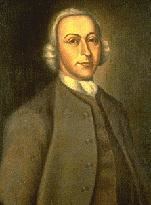Nationality technically British Name Peter Harrison | Occupation Architect Role Architect | |
 | ||
Buildings The Redwood Library, Touro Synagogue, King's Chapel (1749) in Boston, Massachusetts, Christ Church, Cambridge Structures Similar People Isaac Touro, Ezra Stiles, Judah Touro | ||
Peter Harrison (1716–1775) was a colonial American architect who was born in York, England and emigrated to Rhode Island in 1740. Peter Harrison and his brother, Joseph Harrison, came to the American colonies and established themselves as merchants and captains of their own "vessels." Peter Harrison returned to England between 1743 and 1745 and received his formal training as an architect under the direction of one of the English Lords who had dedicated themselves to the training of architects through private studio-schools using pattern books, grand tours of Italy and Greece and through applied skills, teaching their students to become expert draftsmen. These private studio-schools drew from the works of the masters such as Palladio and Vitruvius. It is un-known which of the English Lords allowed Mr. Harrison to join their private studio-school. Harrison's travels and education in Europe allowed him to accumulate a substantial library of books concerning Classically inspired forms as well as allowing him to see the latest designs that were produced by the Palladian movement.
Peter Harrison is credited as being the first professionally trained architect in America. He is, however, not the first to deliver Palladianism to America; there are examples that pre-date his works such as Drayton Hall (1738) in South Carolina and the Byrd Mansion (1730–34) in Virginia. His known works in the British-American colonies are considered, however, to be of the highest quality and the finest examples of Palladianism of his time. Many buildings are attributed to Peter Harrison, but there are only a few that are solidly documented as being his creations. These buildings are: the Redwood Library (1747–49), the Brick Market Building (1762–72) and the Touro Synagogue (1759) in Newport, Rhode Island and the King's Chapel (1749) in Boston, Massachusetts as well as Christ Church, Cambridge (1759–60).
Peter Harrison's unwavering dedication to Toryism and England brought ruin upon him during the turbulent years of the American Revolution. Just after his death in 1775, his home in New Haven, Connecticut, was attacked by a mob of revolutionaries who burned his library and all of his original drawings. This act of political violence destroyed the collection of one of the most erudite architects of the colonial period and did not allow for a catalogue of his designs to be created for posterity.
Peter Harrison died in New Haven, Connecticut in 1775 and is buried in an unmarked grave at the New Haven Green.
